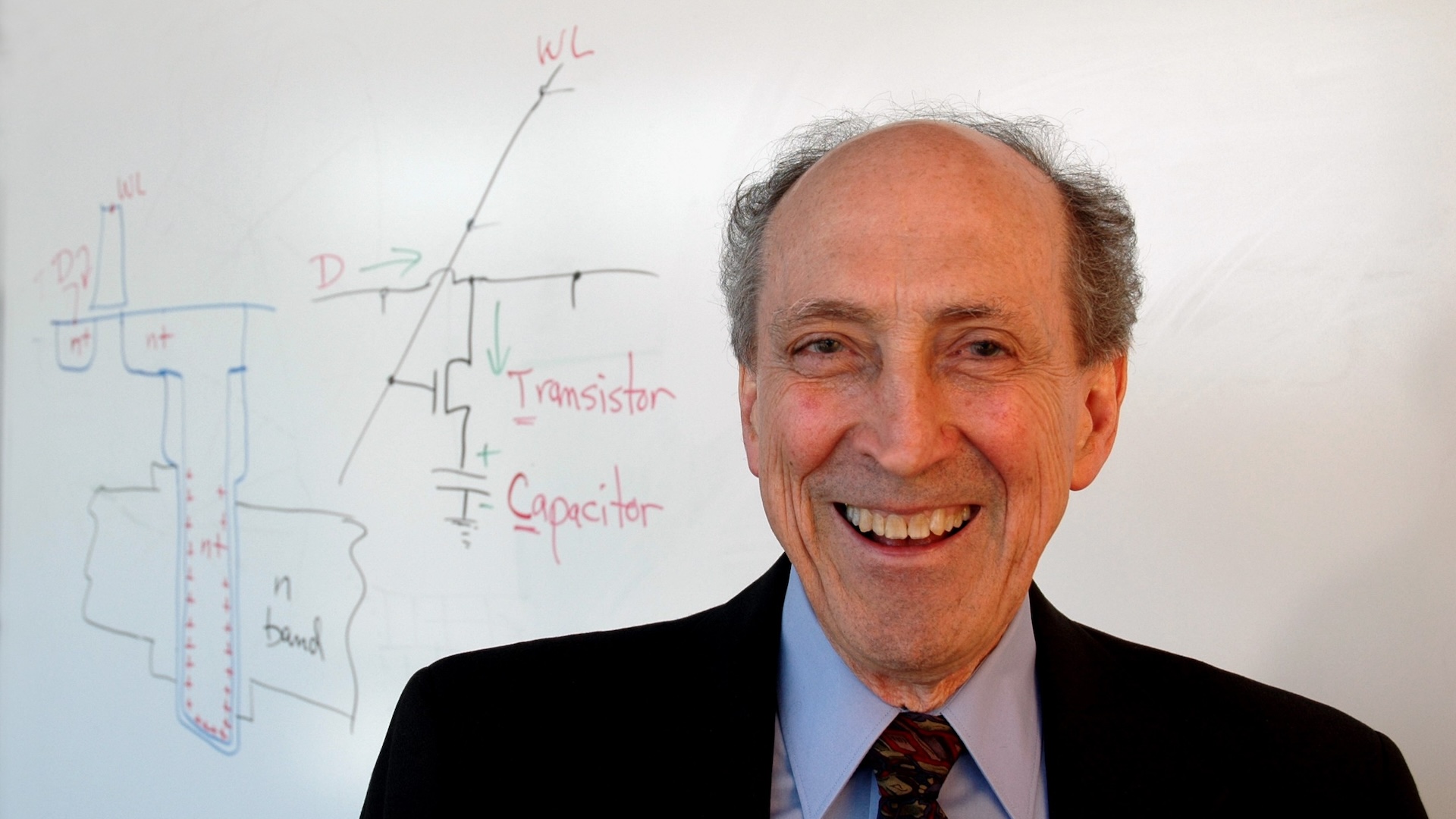
Robert Heath Dennard, a pioneer in electrical and computer engineering who invented DRAM, passed away on April 23, 2024. That single invention helped make possible billions of smartphones, computers, and other consumer electronics. He will also be remembered for Dennard Scaling theory, based on Moore’s law.
Dennard was born on Sept. 5, 1932, in Terrell, Texas. He grew up on a farm with no electricity and went to school in a one-room schoolhouse. His talent as a French horn player earned him a scholarship at Southern Methodist University, where he studied the nascent field of electrical engineering.
After graduating from SMU, Dennard continued his studies to pursue a PhD in electrical engineering at the Carnegie Institute of Technology, now known as Carnegie Mellon. He completed his PhD in 1958 and began working as an IBM researcher. He would remain there for the rest of his lengthy and storied professional career.
Integrated circuits were new and exciting, having just been demonstrated by a Texas Instruments engineer. A main focus of the research field and industry was advancing computer memory and logic, prompting Dennard to delve into the designs and applications for the metal oxide semiconductor field-effect transistor (MOSFET).
Frustrated with the size and power requirements of existing magnetic-core RAM, Dennard and a team of microelectronics specialists developed an alternative system in 1964 that required only six MOS transistors to store one bit of information. Even that design was, they felt, too complex and slow.
Dennard then had a light bulb go off in his head that would revolutionize computing. He began researching how he might store a bit of information in one transistor instead of six. That insight, investigation, and experimentation would eventually lead to the invention of dynamic random-access memory (DRAM.)
The inventor didn’t stop with DRAM. In 1972, Dennard outlined a theory that has helped computers and other electronic devices to get smaller, faster, and more efficient each year. This theory became known as Dennard scaling, or Dennard’s law, and stemmed from Moore’s law.
Moore’s law states the number of transistors capable of fitting into a given space will double approximately every two years. According to Dennard scaling, the performance of each watt increases at approximately the same pace. So, as transistors shrink in size, they also require less power.
Throughout his half-century career, Dennard received many awards and recognitions. He was declared an IBM fellow in 1979 and received the U.S. National Medal of Technology from President Ronald Reagan in 1988. In 1997, Dennard was inducted into the U.S. National Inventors Hall of Fame and was awarded the IEEE Medal of Honor in 2009.
The inventor most recently was given the semiconductor industry’s highest honor. In 2019, the Semiconductor Industry Association recognized Dennard with the Robert N. Noyce Award.
Dennard is survived by his wife, Jane Bridges, and daughters Amy and Holly Dennard. He also leaves behind four grandchildren. His son, Robert H. Dennard, Jr., preceded him in death. A memorial service celebrating Dennard’s life and legacy is scheduled for June 7 at 1:00 p.m. Eastern in Yorktown Heights, New York.



!["[T]he First and Fifth Amendments Require ICE to Provide Information About the Whereabouts of a Detained Person"](https://images.inkl.com/s3/publisher/cover/212/reason-cover.png?w=600)



